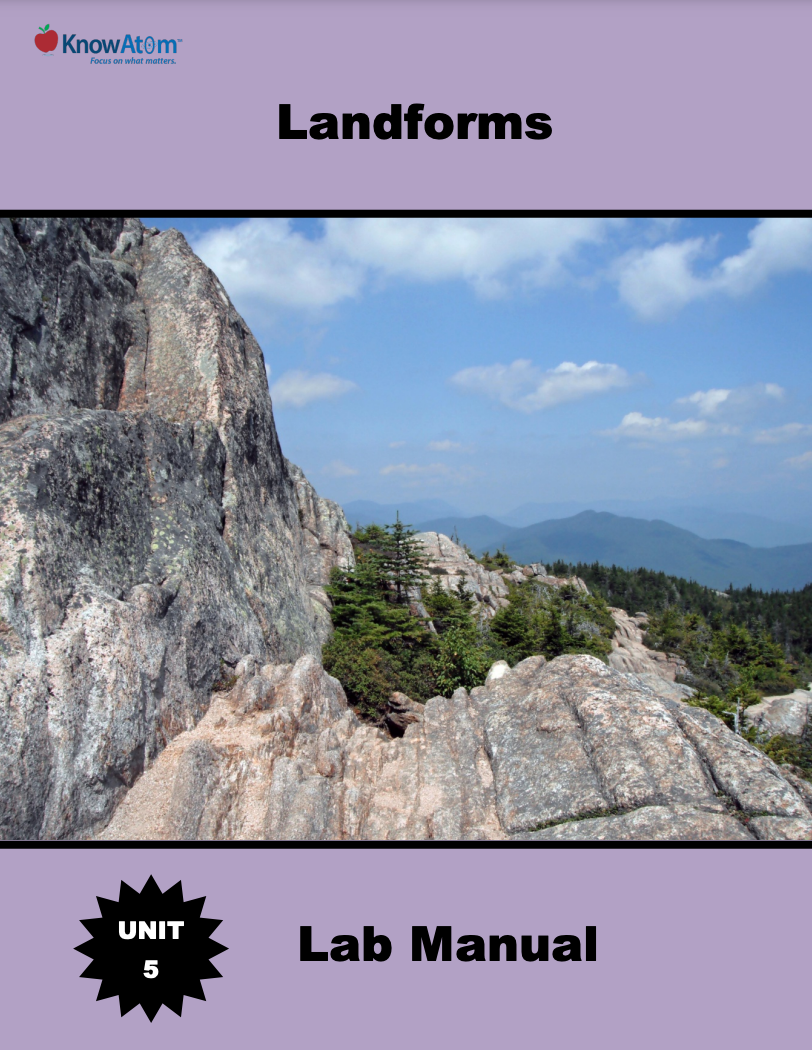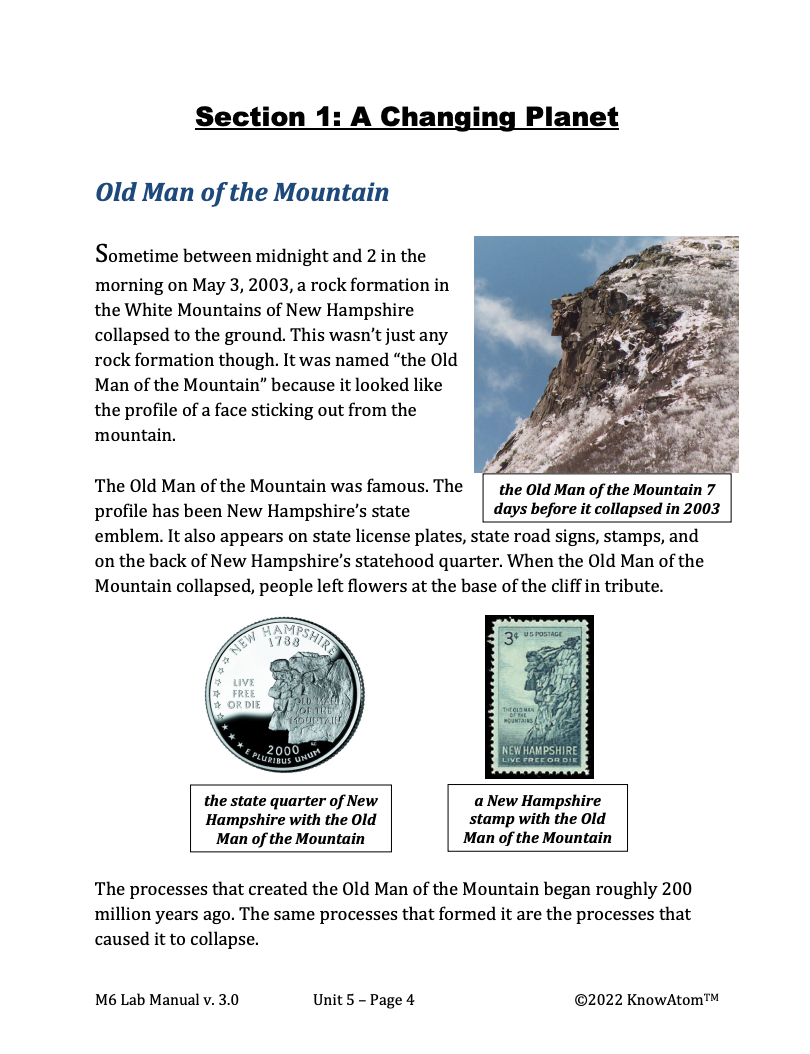.png)
In this unit, students use what they know about the relationship between energy and matter to investigate phenomena of how energy powers the cycling of Earth materials. They begin with this lesson on modeling the Earth processes that form different kinds of rock. This page provides an overview of this lesson.

In this unit, students focus on the science phenomena of processes that change Earth’s surface over time. This lesson has students modeling how Earth’s landforms can be created and then broken down by weathering and erosion. This page is a high-level extract of this lesson.

In this unit, students explore phenomena that change Earth’s surface over time, analyzing how weathering, erosion, and convection in the mantle are three phenomena that help to cycle Earth materials. In this final lesson of the unit, students use their knowledge to analyze the science phenomena of rock strata, thus reconstructing Earth’s geologic history. This page showcases components of this lesson.
.webp)
In this unit, students use what they know about the relationship between energy and matter to investigate how energy powers the cycling of Earth materials. In this lesson, they analyze the phenomena of processes that form fossil fuels, which determine how these natural resources are distributed around the planet. This page highlights all the parts of this lesson.
Standards citation: NGSS Lead States. 2013. Next Generation Science Standards: For States, By States. Washington, DC: The National Academies Press. Neither WestEd nor the lead states and partners that developed the Next Generation Science Standards were involved in the production of this product, and do not endorse it.
